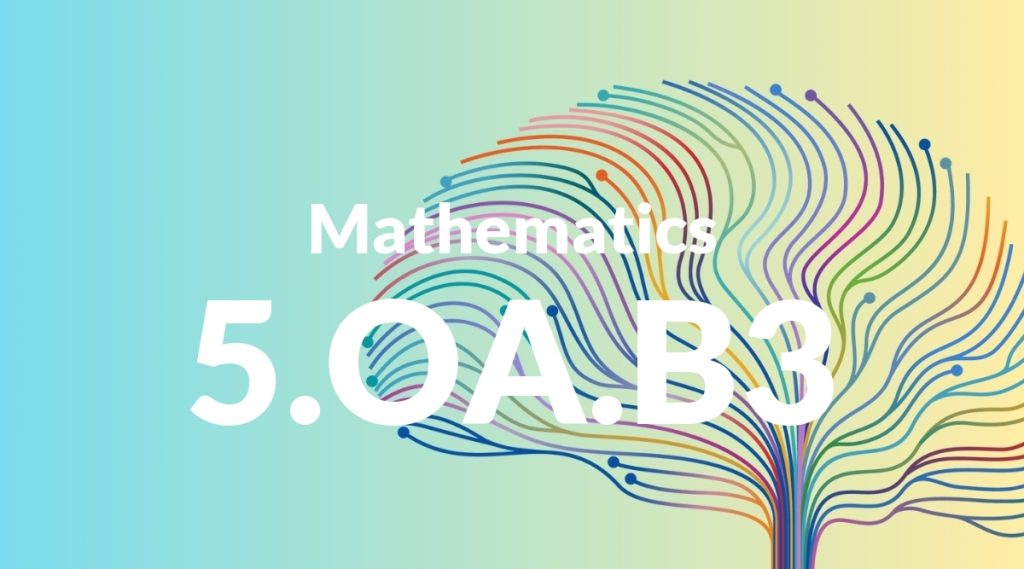Standard: 5.OA.B3 – Generate two numerical patterns using two given rules. Identify apparent relationships between corresponding terms. Form ordered pairs consisting of corresponding terms from the two patterns, and graph the ordered pairs on a coordinate plane. For example, given the rule “Add 3” and the starting number 0, and given the rule “Add 6” and the starting number 0, generate terms in the resulting sequences, and observe that the terms in one sequence are twice the corresponding terms in the other sequence. Explain informally why this is so.
Grade level: Grade 5
Subject: Mathematics
Domain: Operations & Algebraic Thinking
Teacher Overview
This standard focuses on helping students understand and generate numerical patterns using given rules. It is important because it builds foundational skills in recognizing and analyzing patterns, which are crucial for algebraic thinking and problem-solving in higher grades. Before tackling this standard, students should be comfortable with basic addition, multiplication, and graphing points on a coordinate plane.
Mastery of this standard will prepare students for more complex algebraic concepts, such as solving equations and understanding functions, which are essential for higher-level mathematics.
Common Misconception 1
Some students may think that the patterns only apply to the specific rules given in the examples and may not understand that the principles can be generalized to other rules.
Intervention 1
To address this misconception, provide varied examples with different rules and emphasize the underlying principles that remain consistent across different scenarios.
Common Misconception 2
Another common misconception is that students might confuse the order of operations when generating terms in the patterns, leading to incorrect sequences.
Intervention 2
To remediate this, offer step-by-step guided practice with clear instructions on following the rules in the correct order, and use visual aids to reinforce the correct process.
Prerequisite Knowledge
Students should have a solid understanding of basic addition and multiplication, as well as familiarity with graphing points on a coordinate plane.
Subsequent Knowledge
Students will develop skills in more complex algebraic thinking, including solving equations and understanding functions.
Instructional Activities
- Create a table of values for two given rules and generate the corresponding sequences.
- Graph the ordered pairs on a coordinate plane and analyze the relationship between the sequences.
- Use manipulatives or interactive software to visualize the patterns and their relationships.
- Engage in group activities where students create their own rules and compare sequences.
- Solve real-world problems that involve generating and analyzing numerical patterns.




